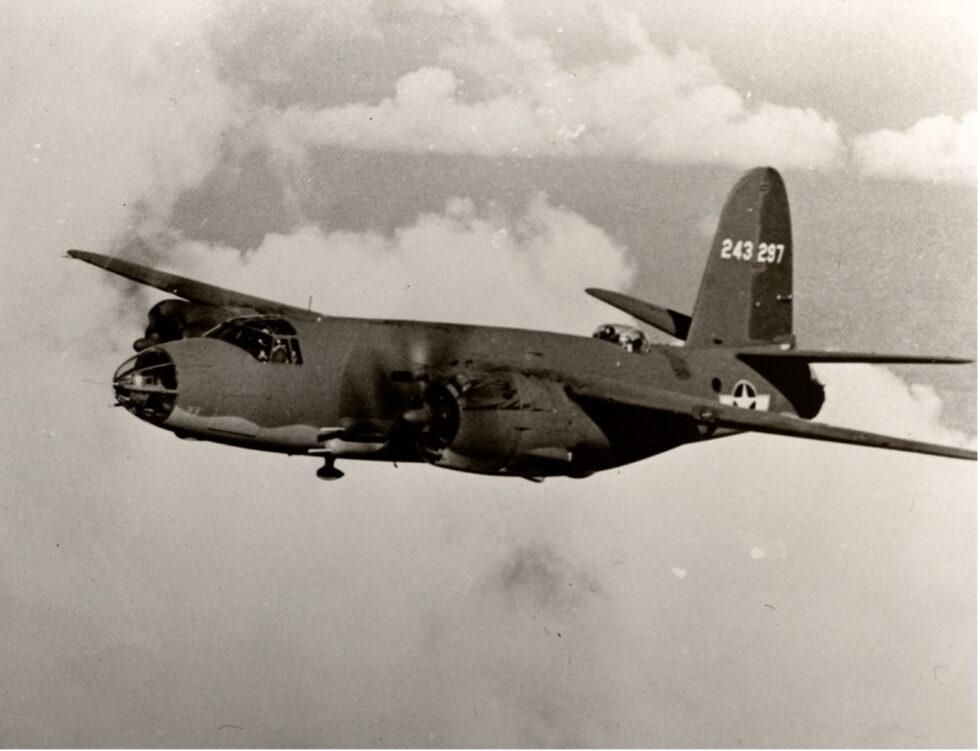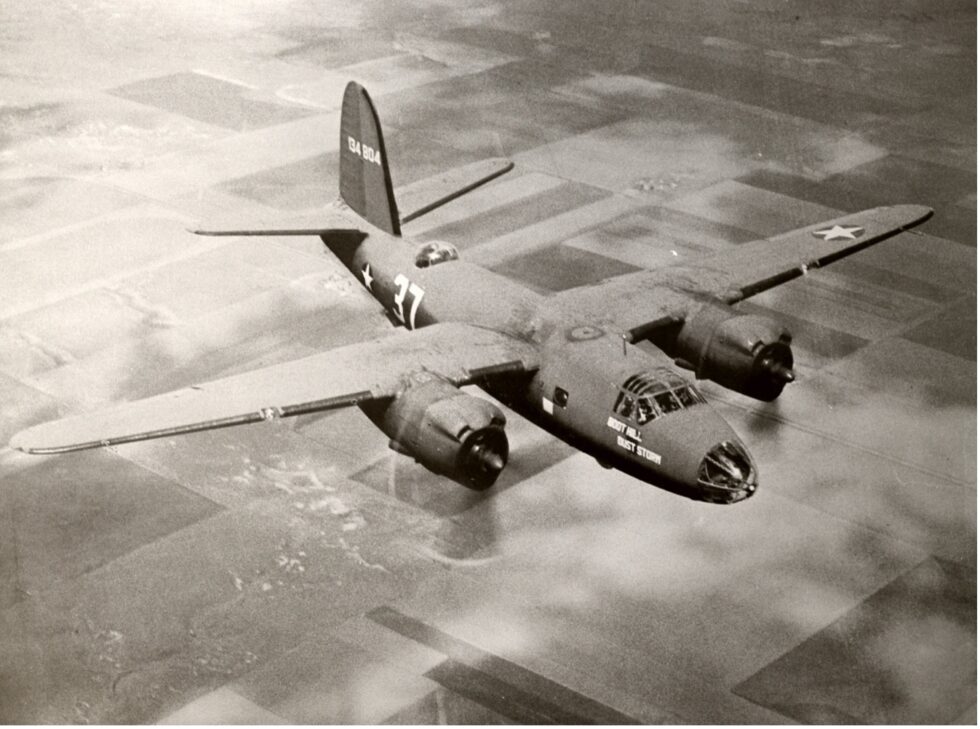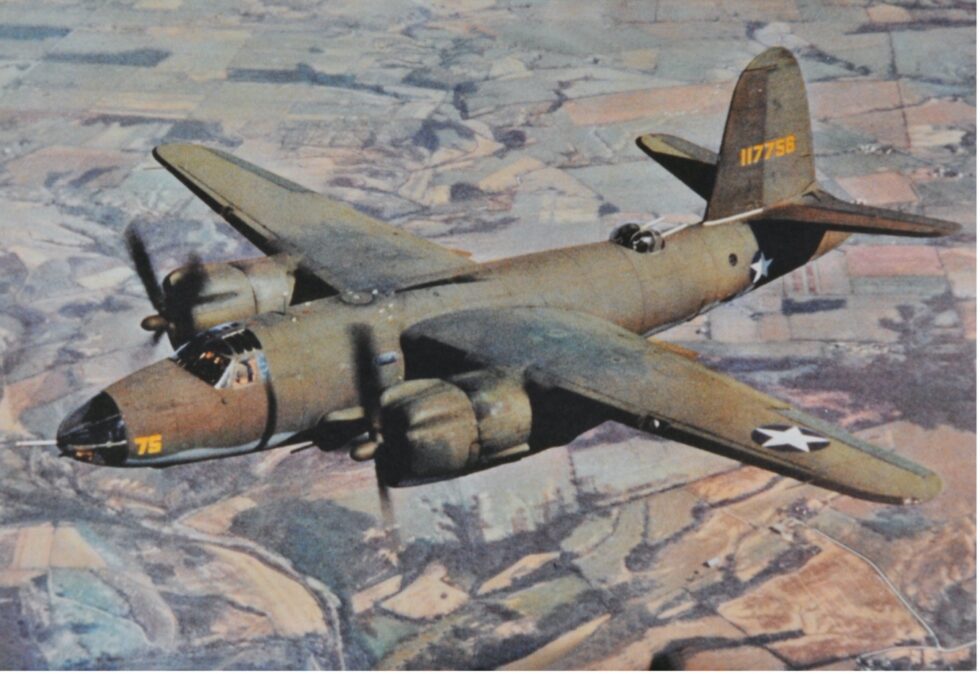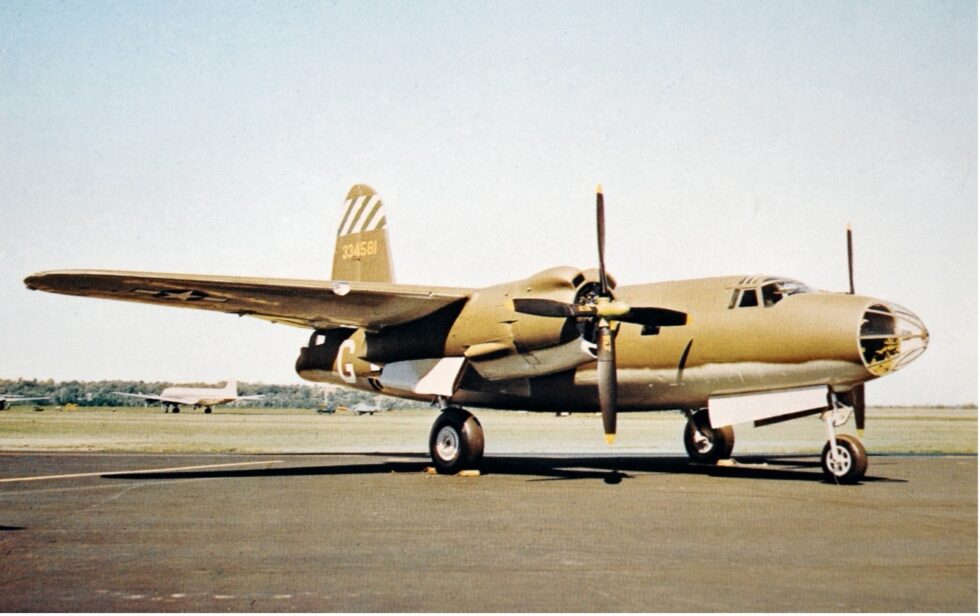U.S. Army Air Forces Martin B-26 Marauder
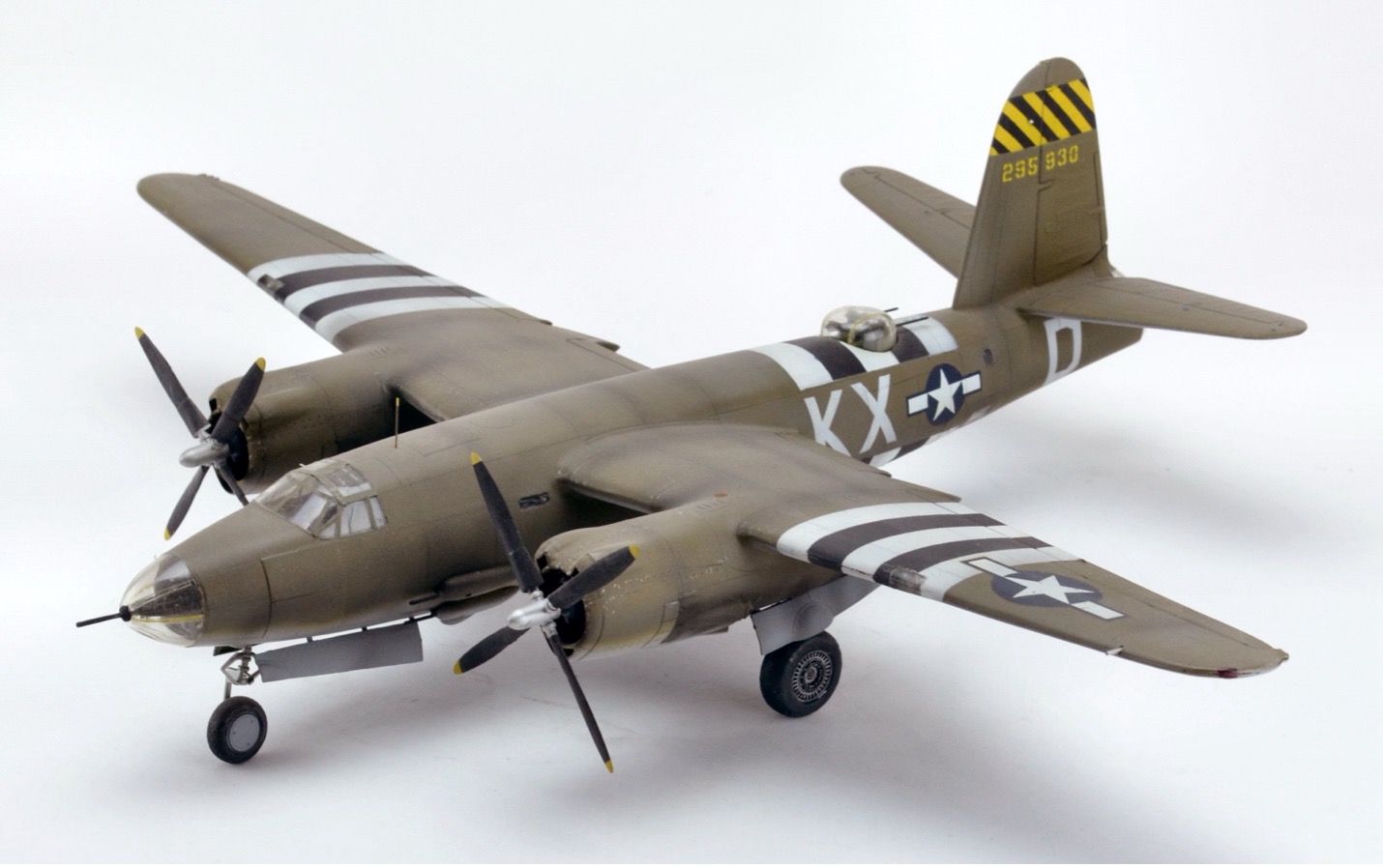
Dr. Nye
1/48
05/25/1966
historical significance
First Albuquerque Visit: 1942
Additional Information:
The Martin B-26 Marauder is an American twin-engine medium bomber that saw extensive service during World War II. The B-26 was built at two locations by the Glenn L. Martin Company; Baltimore, Maryland and Omaha, Nebraska. The B-26 was first used in the Pacific Theater of World War II in early 1942 and it was also used in the Mediterranean Theater and in Western Europe.
After entering service with the United States Army Air Forces, the aircraft quickly received the reputation as a “widowmaker” due to the early production models having a higher than average accident rate during takeoffs and landings. The Marauder had to be flown at unusually high speed on short final runway approaches and this requirement was intimidating to many new pilots who were used to a much slower approach speed when landing. Once the Marauder slowed to a speed below what was stipulated in the flight manual the aircraft would often stall and then crash. At the end of the production of the Marauder, a total of 5,288 B-26 aircraft were produced between February of 1941 and March of 1945.
The Martin B-26 Marauder was a frequent transient visitor to Kirtland Field in Albuquerque New Mexico before and all through World War II. In addition, the aircrew training school at Kirtland used the B-26 aircraft to tow targets for air to air gunnery practice from 1942 until 1945.

